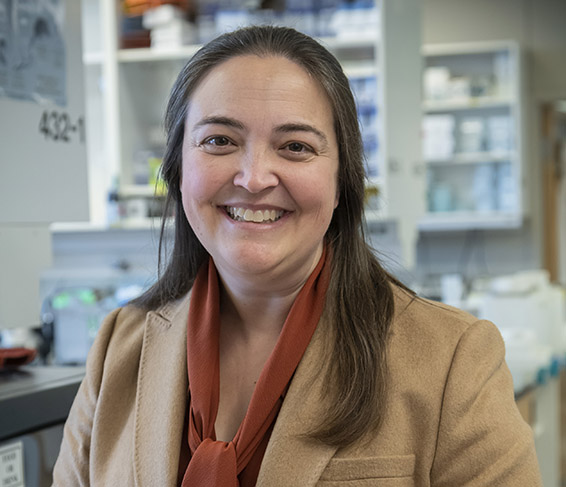
Kathleen Burns, MD, PhD
Contact Information
Office Phone Number
Biography
Kathleen Burns, MD, PhD
Dr. Burns is a physician-scientist and practicing hematopathologist. Her research laboratory studies roles transposable elements play in human disease. Her lab was one of the first to develop a targeted method for amplifying mobile DNA insertion sites in the human genome, and show that these are a significant source of structural variation (Cell, 2010). Her group continues to characterize these understudied sequences in genomes and to describe the expression and genetic stability of interspersed repeats in normal and malignant tissues. The lab has described the overexpression of Long INterspersed Element-1 (LINE-1) open reading frame 1 protein (ORF1p) in a wide array of human cancers (American Journal of Pathology, 2014). They have mapped somatically-acquired LINE-1 insertion sites incurred during the evolution of pancreatic ductal adenocarcinomas (Nature Medicine, 2015) and ovarian cancers (Proceedings of the National Academy of Sciences, 2017). The lab has ongoing projects focused on the functional consequences of inherited mobile element insertions (Proceedings of the National Academy of Sciences, 2017) and LINE-1 expression in cancers (Nature Structural and Molecular Biology, 2020). Dr. Burns has authored reviews on human transposons (Cell, 2012), their activities in cancer (Nature Reviews Cancer, 2017), and their impact on gene expression (Nature Reviews Genetics, 2019). She has organized several national and international meetings in the field, and has been continuously funded by the National Institutes of Health for her research. Dr. Burns received her M.D., Ph.D. from Baylor College of Medicine. She completed a clinical pathology (CP) residency and hematopathology fellowship at Johns Hopkins School of Medicine, and thereafter joined the faculty and progressed through the academic ranks to Professor. She served as Vice Chair for Research in the Pathology Department and Director of the Physician Scientist Training Program at Johns Hopkins. She was recruited to Dana-Farber as Chair of the Department of Pathology in 2020.
Researcher
Physician
Fellowship
- Johns Hopkins School of Medicine
Residency
- Johns Hopkins School of Medicine
Medical School
- Baylor College of Medicine
Recent Awards
- American Society for Clinical Investigation (ASCI) – 2018
- Scriver Family Visiting Professorship in Genetic Medicine, McGill University – 2019
Research
Research Departments
Locations

Dana-Farber Cancer Institute
450 Brookline Avenue Jimmy Fund JF-220 Boston, MA 02215Dana-Farber Cancer Institute


